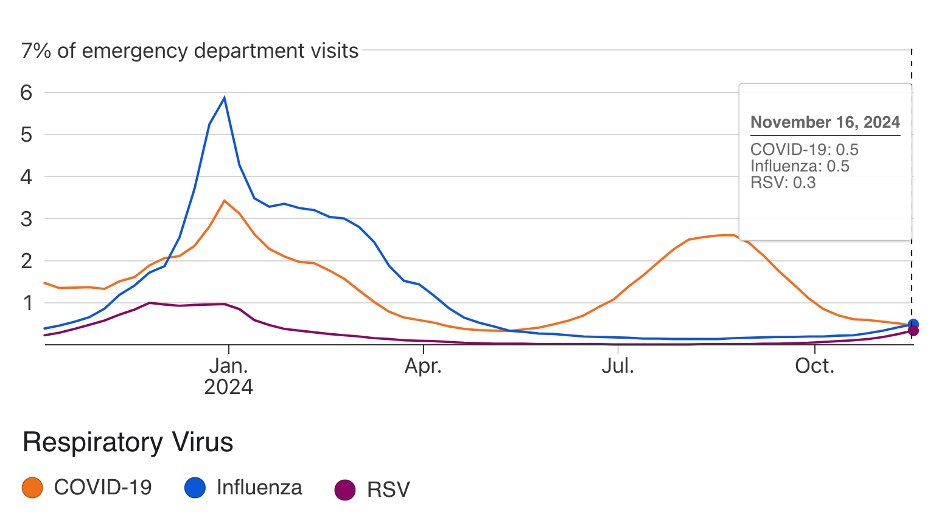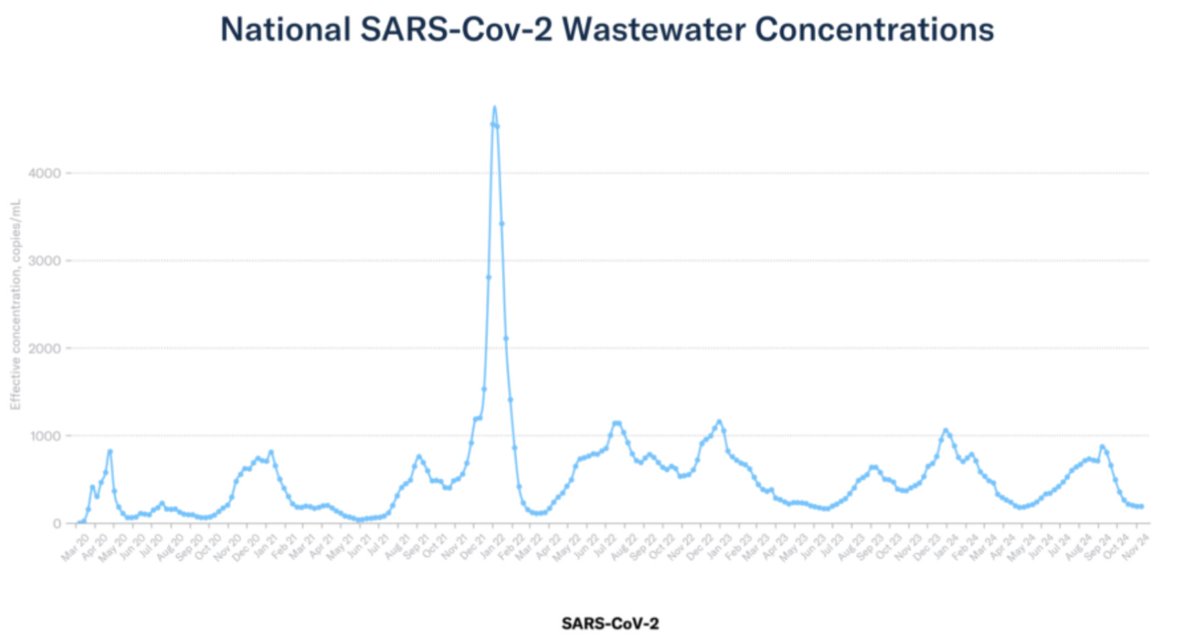48-1/ COVID update for epidemiological weeks 47-48 of 2024—but since this is the season of URT infections, and COVID-19 is on hiatus, this week's update will also look at the other respiratory viruses that are making us sick at the moment.
48-2/ Today is the fifth anniversary of the COVID-19 pandemic. The symptoms of patient zero, a 55-year-old male, began on 1 December 2019. He wasn't hospitalized until the following 8 Dec. But by the end of Dec, 41 people were hospitalized with a novel form of pneumonia. 

48-3/ On 28 Dec 2019, Dr. Lili Ren, a virologist at Union Medical College in Beijing submitted a complete sequence of SARS-CoV-2 to GenBank, but it failed to include the proper annotations & wasn't made public. Not until 10 Jan that a sequence was available on GenBank & GISAID.
48-4/ Initially, the virus was christened 2019-nCoV (short for "2019 Novel Coronavirus").
.
The name SARS-CoV-2 (short for "Severe Acute Respiratory Syndrome Coronavirus 2") was officially assigned by the International Committee on Taxonomy of Viruses (ICTV) on February 11, 2020
.
The name SARS-CoV-2 (short for "Severe Acute Respiratory Syndrome Coronavirus 2") was officially assigned by the International Committee on Taxonomy of Viruses (ICTV) on February 11, 2020
48-5/ Of course, SARS2 quickly became a worldwide pandemic. Official deaths totaled 7 million over the first 4 years. However, excess deaths suggest that COVID cases and deaths were undercounted and that actual deaths were between 19 and 36 million. 



48-6/ Vaccines and convalescent immunity have turned SARS-CoV-2/COVID-19 into an endemic disease. COVID is now killing fewer people than Malaria is—and, in the US, it's dropped to 14th place on the CDC's top 15 causes of death. 

48-7/ Although there's a steady background rate of infections, COVID is mostly on hiatus in the US. Biobot's wastewater numbers show COVID is at it's usual post-Omicron interwave low. ED visits, hospitalizations, and deaths are at all very low. 



48-8/ Although the last data from the CDC is 16 Nov, as a percentage of emergency department visits, influenza probably surpassed COVID last week. RSV is on the upward trend, too. 

48-9/ Biofire's proprietary Syndromic Trends application tells a somewhat different story. Of the top 6 respiratory viruses, RSV is on a steep upward curve. And Rhinoviruses are surging. COVID may be showing a slight upward incline. But OC-43 has shown a steep increase, too. 

48-10/ I was curious what Biofire had to say about other Coronaviruses. NL63 and HKU1 are also on the rise. 

48-11/ After starting about a month late this year, flu season is revving up. Biobot shows upticks influenza A and B in wastewater. 



48-12/ And in A(H5) news, although there have been no known human cases of bird flu due to drinking raw milk (or pasteurized milk, for that matter), H5N1 was detected in a raw milk producer's products. CA banned their distribution.
latimes.com/environment/st…
latimes.com/environment/st…
48-13/ And Canadian health officials haven't been able to trace the source of the H5N1 that infected the BC child (who has been in critical care for the past 3 weeks). The sequence is closest to an A(H5) clade found in geese, though.
cidrap.umn.edu/avian-influenz…
cidrap.umn.edu/avian-influenz…
48-14/ I missed this story last week. A California child contracted A(H5). Symptoms were mild, though. The CDC doesn't say whether this was contracted from birds or farm animals. But I think this is the 1st non-dairy worker to catch A(H5) in US this year?
cdc.gov/media/releases…
cdc.gov/media/releases…
48-15/ That's it for this update. See you in two weeks.
/end
/end
@threadreaderapp unroll
• • •
Missing some Tweet in this thread? You can try to
force a refresh






























